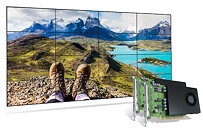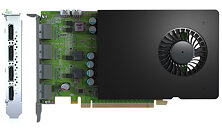Lisuan Unveils G100, China's 6 nm GPU Targeting RTX 4060-Level Performance
Lisuan Technology announced this week on its official WeChat channel that it has successfully powered on its prototype G100 graphics card. The company describes the G100 as China's first domestically designed 6 nm GPU, marking a significant milestone in its effort to challenge established industry players. With the first silicon now operational, Lisuan is moving into driver development, software validation, and broader system integration testing. Although Lisuan has provided few formal specifications, rumors indicate that SMIC is fabbing the G100 die, currently the only Chinese foundry capable of producing a 6 nm node under US export restrictions. Rumors describe the performance as being on par with NVIDIA's GeForce RTX 4060 in mid-range gaming tests, alongside generous onboard memory, efficient power consumption, and support for DirectX 12, Vulkan 1.3, and OpenGL 4.6. If accurate, these features could position the G100 for both gaming and general-purpose GPU workloads.
Founded in late 2021 by a team of former Silicon Valley engineers with more than 25 years of collective chip-design experience, Lisuan Technology is among the youngest entrants in China's graphics-chip sector. It follows Biren Technology (established in 2019) and Moore Threads (established in 2020) in their pursuit of a homegrown alternative to foreign GPU offerings. Beijing's push for semiconductor self-sufficiency has encouraged such ventures, and Lisuan insists its TrueGPU architecture is fully developed in-house rather than licensed from outside sources. The G100 was initially slated for a 2023 launch but encountered financial headwinds that nearly forced Lisuan into bankruptcy in 2024. A $27.7 million capital injection from the parent company, Dongxin Semiconductor, kept development on track through tape-out and early risk-production trials. Lisuan now plans to ship small volumes of G100 cards in the third quarter of 2025, with mass availability more likely in 2026.
Founded in late 2021 by a team of former Silicon Valley engineers with more than 25 years of collective chip-design experience, Lisuan Technology is among the youngest entrants in China's graphics-chip sector. It follows Biren Technology (established in 2019) and Moore Threads (established in 2020) in their pursuit of a homegrown alternative to foreign GPU offerings. Beijing's push for semiconductor self-sufficiency has encouraged such ventures, and Lisuan insists its TrueGPU architecture is fully developed in-house rather than licensed from outside sources. The G100 was initially slated for a 2023 launch but encountered financial headwinds that nearly forced Lisuan into bankruptcy in 2024. A $27.7 million capital injection from the parent company, Dongxin Semiconductor, kept development on track through tape-out and early risk-production trials. Lisuan now plans to ship small volumes of G100 cards in the third quarter of 2025, with mass availability more likely in 2026.




























































